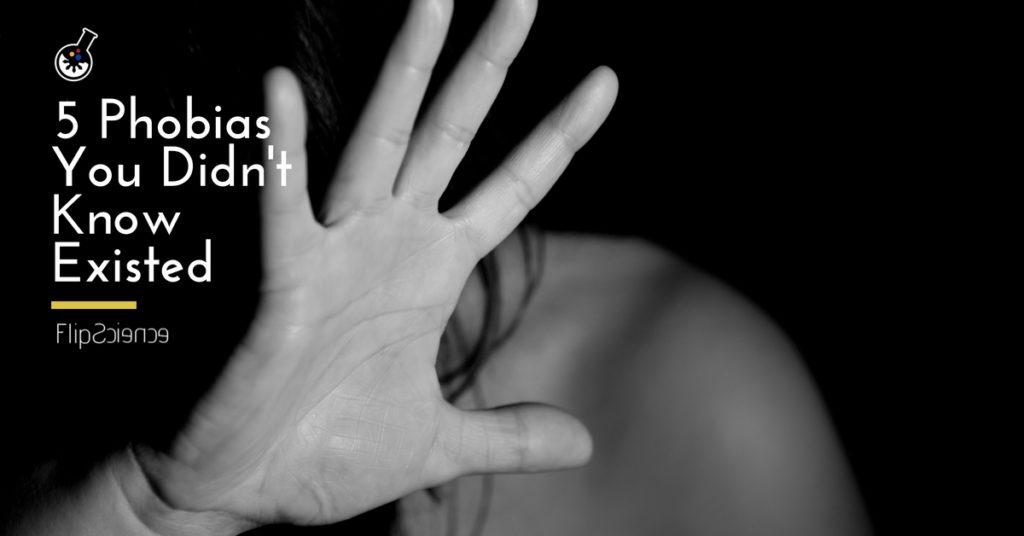It’s not uncommon for us to have things that, without fail, give us goosebumps and make our hairs stand on end. It also isn’t unheard of for people to react to certain stimuli in an irrationally fearful manner, skipping disgust or uneasiness and jumping straight to panic, anxiety, and pure terror.
These disorders, known as phobias, are fundamentally based on fear. Some phobias can be so extreme that the mere sight of the phobic stimulus can fully incapacitate a person. Arachnophobia is a good example; it’s the fear of spiders — a fear that affects women four times more than men — and is perhaps one of the most well-known phobias out there.

“Oh, yeah? Well, you aren’t exactly Miss Universe 2018 yourself, lady!” (Photo: Sony Pictures)
There’s a good chance you’ve heard of trypophobia — the fear of clustered holes — which, for some reason, has become quite popular on social media. There’s also cynophobia (the fear of all kinds of dogs) which, while a bit strange, is understandable. Other phobias veer into more unusual territory, such as arachibutyrophobia, a strangely specific fear of having peanut butter sticking to the roof of your mouth.
Speaking of strange phobias, here are five of the oddest and most obscure fears out there. If you’re a Filipino, there’s a good chance you’ll find these interesting (if not twice as weird).
Phobia #1: Nomophobia
In 2016, there were approximate 40 million smartphone users in the Philippines. That number is expected to double by the time we reach 2021. It kind of makes you wonder if there are any smartphone users in the Philippines who suffer from nomophobia, the fear of being without mobile phone coverage.
Recent studies have shown that close to half of the United Kingdom’s population may suffer from it. Interestingly, nomophobia also covers the fear of emptying your smartphone battery, or even just losing sight of your phone. Unfortunately, this fear could just as easily serve as fuel for any well-meaning (but ultimately misguided) parental figure’s crusade against using smart devices.

And no, your SMS-addicted best friend or Mobile Legends-obsessed significant other doesn’t necessarily have it.
Phobia #2: Ergophobia
Considering how workaholism seems to be a significant problem in Asia, it would really be strange to be a Filipino with ergophobia. Simply put, ergophobia is a persistent fear of work. If you have ergophobia, just being within the confines of the office might send you into a panic.

Just be careful not to confuse ergophobia with plain and simple laziness.
Phobia #3: Allodoxaphobia
In addition to being avid smartphone users, Filipinos are also quite active on social media. In fact, statistics show that the average Filipino spends 3 hours and 57 minutes a day on social media websites.
Along with that level of social media activity tends to come a great deal of passion. Whether it’s about politics, TV shows, or where to eat the best halo-halo, it’s common to see people exchanging thoughts, opinions, and even barbs and insults on a regular basis.
However, if you have allodoxaphobia, you’re probably not part of that crowd. Allodoxaphobia is the fear of other people’s opinions. It is also extremely rare, which means that if you have it, there’s a good chance that you’d feel isolated or uneasy in any social setting.

On the bright side, it could make your social media life a lot more peaceful.
Phobia #4: Agyrophobia
If the thought of crossing the street absolutely terrifies you, then you probably have agyrophobia. Agyrophobics are deathly afraid of crossing the street, even when the light on their side is green and there are no imminent threats in sight.

Something tells me that *some* of us could benefit from having this fear. I dunno, just a hunch. (Photo: Roy Lozano, GMA News Online)
Phobia #5: Papaphobia
Last on this list is papaphobia. No, it’s not a fear of your dad — it’s the fear of the pope. This particular phobia would be quite weird to have in a predominantly Catholic nation such as the Philippines.
Papaphobia is closely related to theophobia (the fear of gods and religion), hagiophobia (the fear of saints and holy objects), ecclesiophobia (the fear of the church), and uranophobia (the fear of heaven or the sky).

“Ahhh! No! Please, anything but eternal peace and a final reward for a life well-lived! NOOOOOO!
References
- 100 Weird Phobias That Really Exist. Nursing Degree Guide. January 7, 2010. http://www.nursingdegreeguide.org/2010/100-weird-phobias-that-really-exist/. Accessed August 29, 2018.
- Camus M. PH is world leader in social media usage. February 15, 2018. http://business.inquirer.net/246015/ph-world-leader-social-media-usage#ixzz5PWmyrY3e. Accessed August 29, 2018.
- Eire G. 11 Very Real Phobias That You Never Knew Existed. LittleThings.com. n.d. https://www.littlethings.com/obscure-phobias/. Accessed August 29, 2018.
- Jiao C. Smartphone users to double to 90 million in five years. CNN Philippines. July 12, 2016. http://cnnphilippines.com/business/2016/07/12/smartphone-users-90-million-in-five-years.html. Accessed August 29, 2018.
- Kinder L. 13 of the most unusual phobias. The Telegraph. September 6 2013. https://www.telegraph.co.uk/news/science/10289366/13-of-the-most-unusual-phobias.html. Accessed August 29, 2018.
- “Psychologist Mimi.” Allodoxaphobia – the Fear of other People’s Opinions: Is that a Workplace Thing? May 26, 2013. https://psychologistmimi.com/2013/05/26/allodoxaphobia-the-fear-of-other-peoples-opinions-is-that-a-workplace-thing/. Accessed August 29, 2018.
- Weiss R. Nomophobia: Something New to Worry About? Not! May 21, 2016. HuffPost. https://www.huffingtonpost.com/robert-weiss/nomophobia-mobile-device_b_7337316.html. Accessed August 29, 2018.
- Winerman L. Figuring out phobia. American Psychological Association. July/August 2005. http://www.apa.org/monitor/julaug05/figuring.aspx. Accessed August 29, 2018.
Author: Mikael Angelo Francisco
Bitten by the science writing bug, Mikael has years of writing and editorial experience under his belt. As the editor-in-chief of FlipScience, Mikael has sworn to help make science more fun and interesting for geeky readers and casual audiences alike.







